Mexican Red Pork Tamales
Mexican cuisine has its treasured gems, and one of them is Red Pork Tamales—a timeless classic. Made from tender pork, slow-cooked and shredded, then bathed in a rich chili sauce, these tamales are infused with aromatic spices that capture the very essence of our culture.
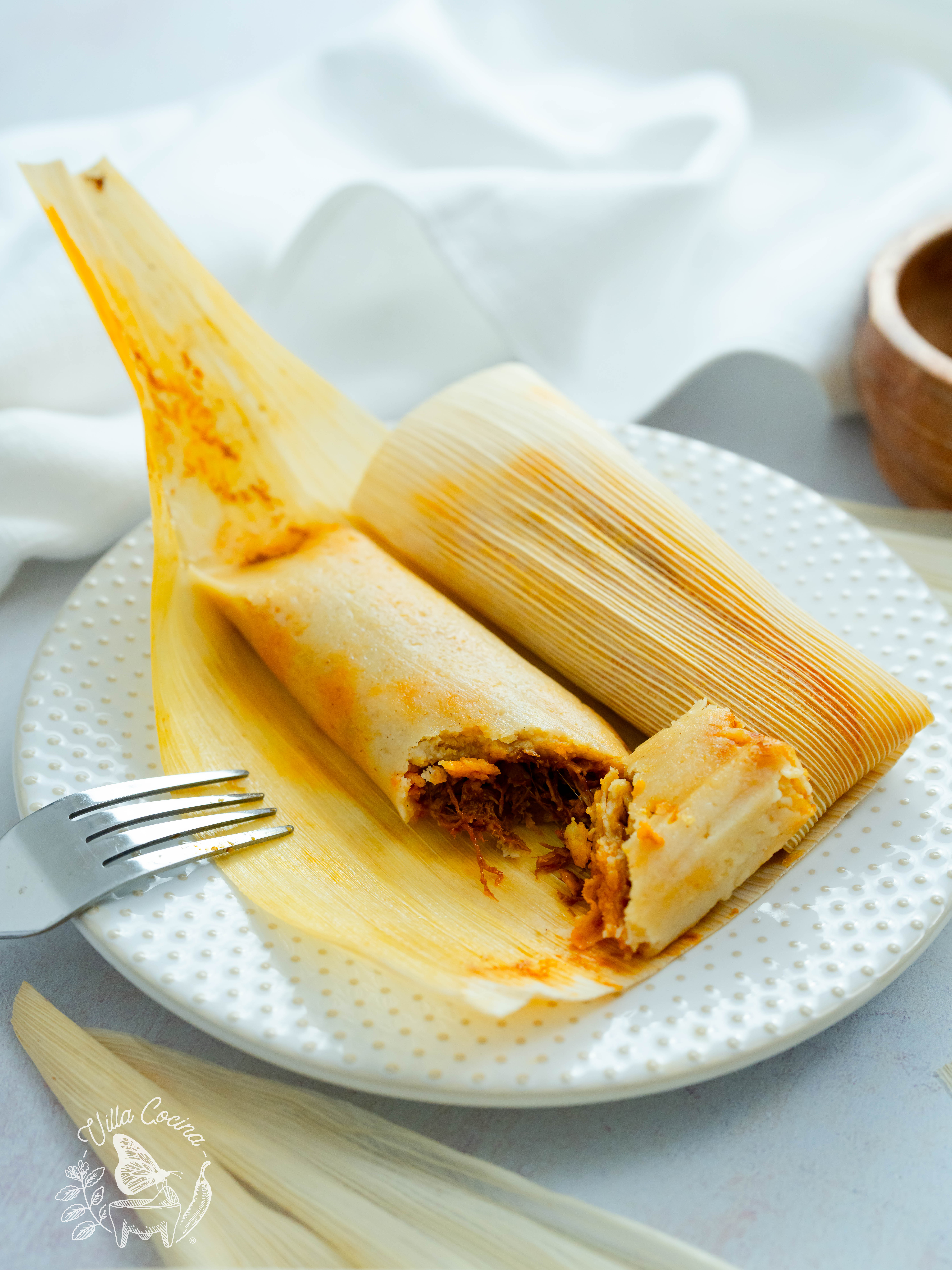
What Are Tamales?
Tamales are a traditional Mexican dish made from masa (corn dough) spread onto a corn husk. The filling, which can include meats soaked in red or green salsa, vegetables, or cheese, is added to the center.
The husk is then folded and sealed around the dough, encasing the filling as it cooks to perfection. This flavorful, portable dish is often served at celebrations or enjoyed as a comforting meal.
The filled tamales are then steamed to cook the masa, ensuring it sets properly. When unwrapped, they hold their shape, remaining moist, soft, and full of flavor.
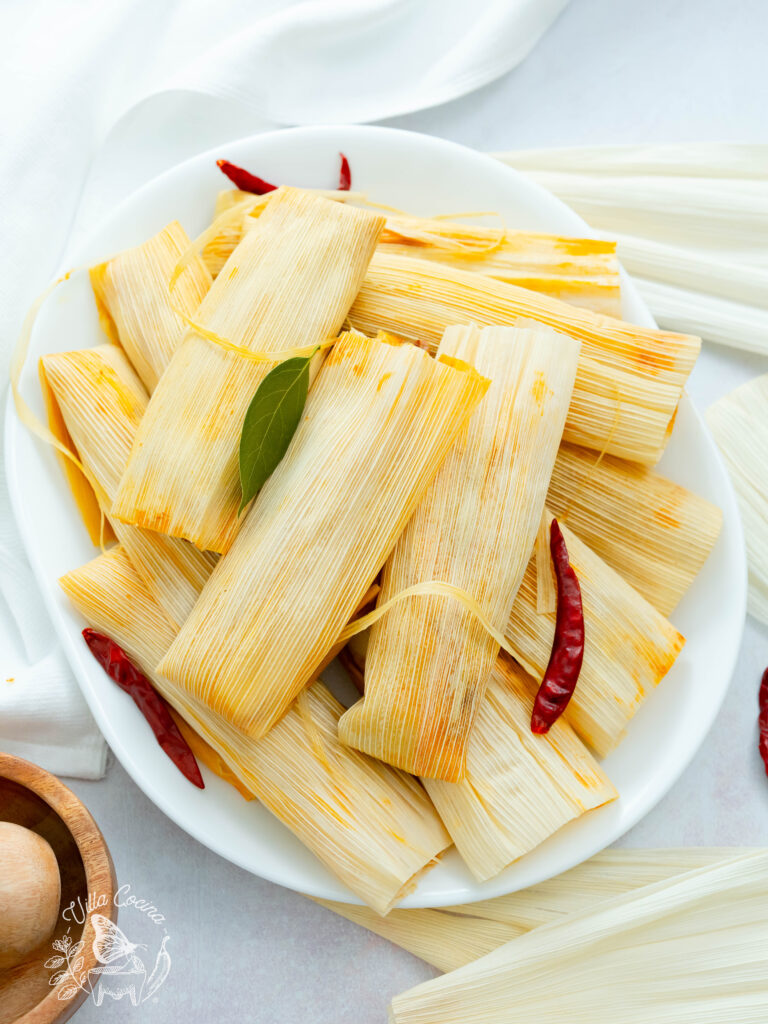
Dish of Celebration
Creating a celebration menu is simple for us Mexicans, with a trusted array of traditional dishes we prepare time and time again, especially during Christmas, New Year’s, and even U.S. Thanksgiving, where tamales often make an appearance on the table.
Alongside tamales, many families also prepare other iconic celebratory dishes like pozole, carnitas and mole, making these occasions even more special.
I love our gatherings because, even with just 10 people, my mom always makes a big batch of tamales—enough to feed a crowd. The best part is taking home leftovers, which is always part of the plan, and we couldn’t love it more!
Ingredients
- Pork shoulder (Boston butt) is the ideal choice for tamales due to its rich marbling of fat, which adds flavor and keeps the meat moist and tender.
- White onion adds a subtle sweetness, while garlic brings a distinctive sharpness. When cooked together, they form a rich flavor base.
- Bay leaves bring earthy tones, while Mexican oregano adds a floral, earthy depth. Cumin seeds lend warm, nutty, and smoky notes, complemented by a slight kick from black pepper. Together, these aromatics enhance and deepen the dish’s flavor profile.
- Guajillo chiles are mild in heat with subtle flavor, making them a perfect pairing for the smoky, slightly sweet, and dried fruit-like notes of ancho chiles. Meanwhile, chile de árbol adds a sharp kick of heat, making it the spiciest pepper in this mix.
- Corn masa harina is a type of flour made from dried corn kernels that have been soaked in a lime solution until soft, then ground into a fine powder. Note that it’s referred to as corn flour, but it’s not the same as cornmeal.
- Baking powder helps soften the masa and creates a slightly lighter texture with a small rise, resulting in a less dense, more tender dough.
- Pork lard brings a rich, traditional pork flavor, while shortening offers a neutral taste. Together, they create a balanced flavor, resulting in tamales that are moist and tender.
- Corn husks play a crucial role in tamales by wrapping and shaping the masa and filling, helping to retain moisture. Beyond their functional use, these husks impart a delicate, earthy flavor.
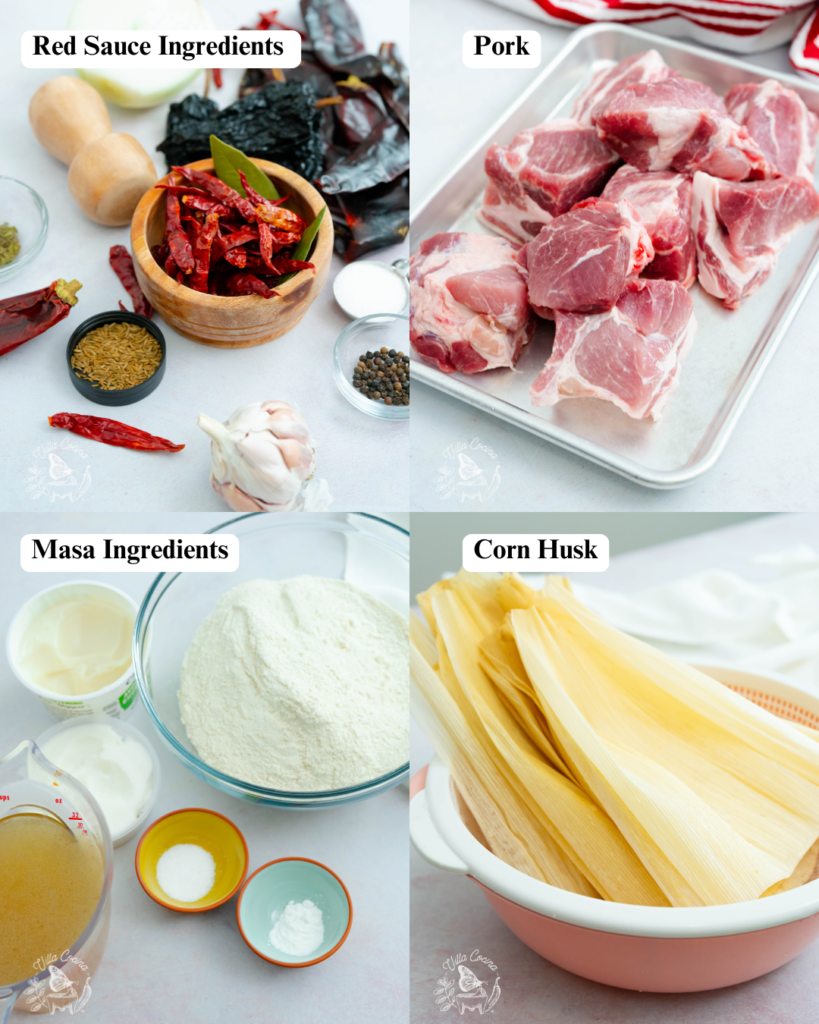
How to Make Tamales
Cooking the Pork
Heat oil in a large pot over medium heat. Sauté onion wedges until softened, then remove and reserve. Adjust the heat to medium-high.
Brown the pork in batches, turning each piece to ensure even coloring on all sides and to avoid overcrowding the pot.
Add water and return the browned pork to the pot. Stir in the aromatics and salt. Bring to a boil, then reduce to a gentle simmer over medium-low heat. Cover and cook for 2–2.5 hours, or until the meat is fork-tender. Shred the meat and strain the broth, reserving both for later use.
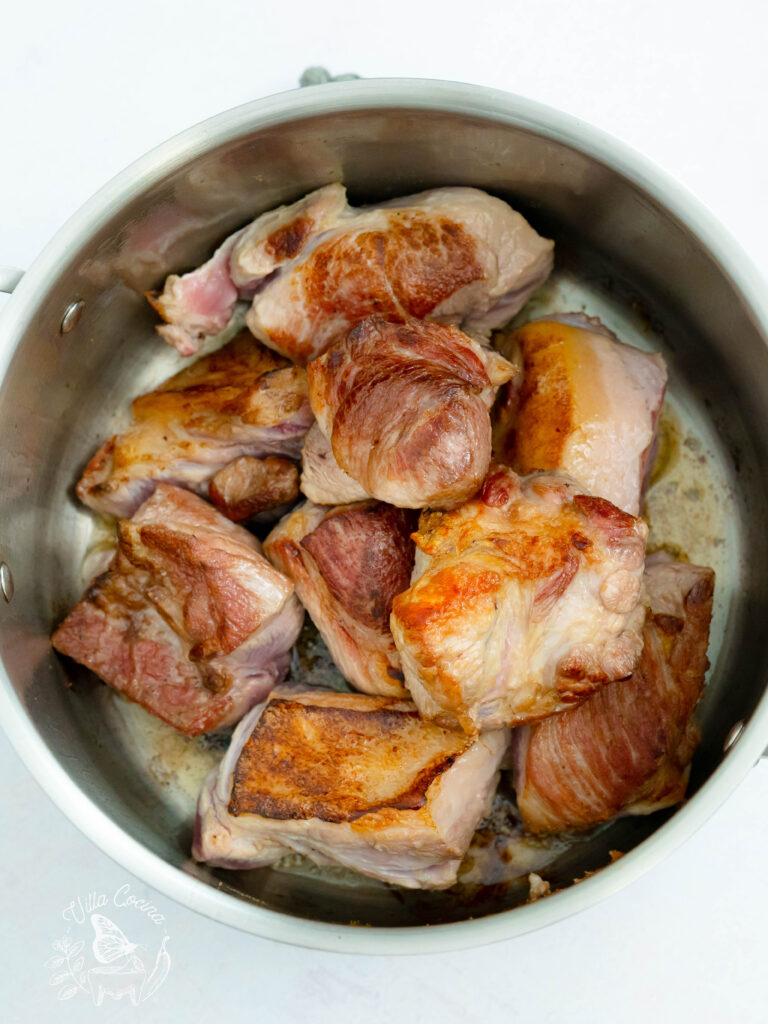
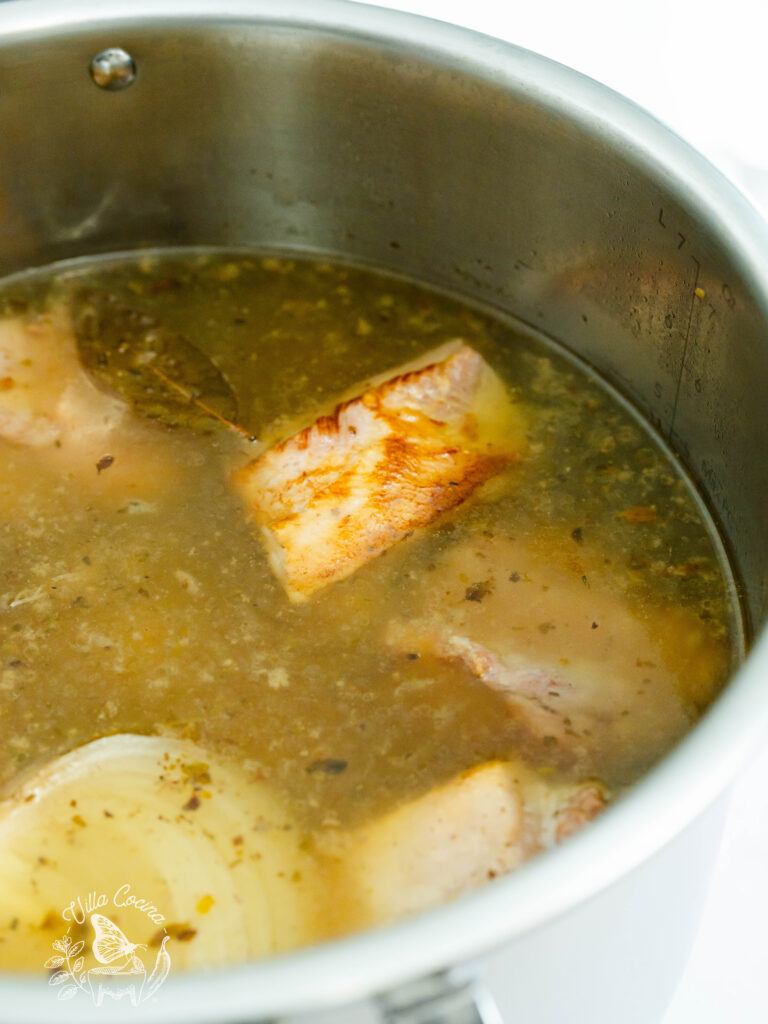
Chile Sauce
Toast the guajillo, ancho, and arbol chilis on a comal over very low heat until fragrant, turning constantly to prevent them from burning.
Rinse the peppers and transfer them to a heatproof container. Pour 2 cups of the reserved hot broth over the chiles to rehydrate, and let them sit for about 5 minutes, or until softened.
Molcajete (If you don’t have a Mexican mortar and pestle, skip this step) : Grind and mash the garlic, cumin, and salt into a paste, then loosen it with 2 tablespoons of water. Transfer to a small container and set aside until needed.
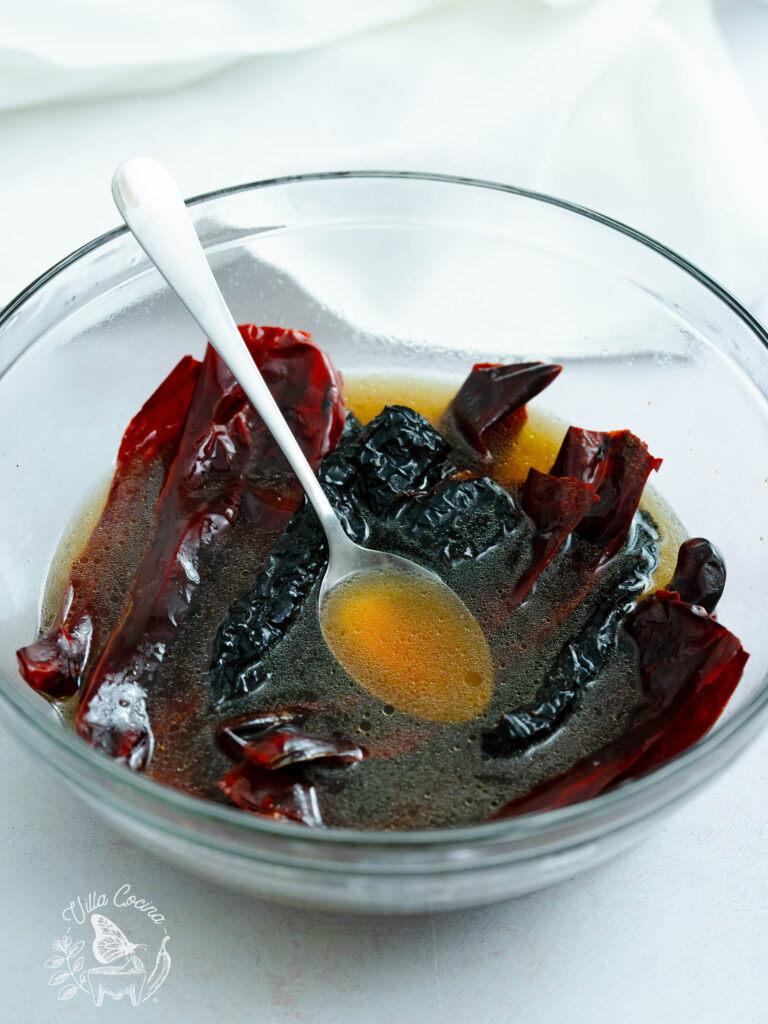
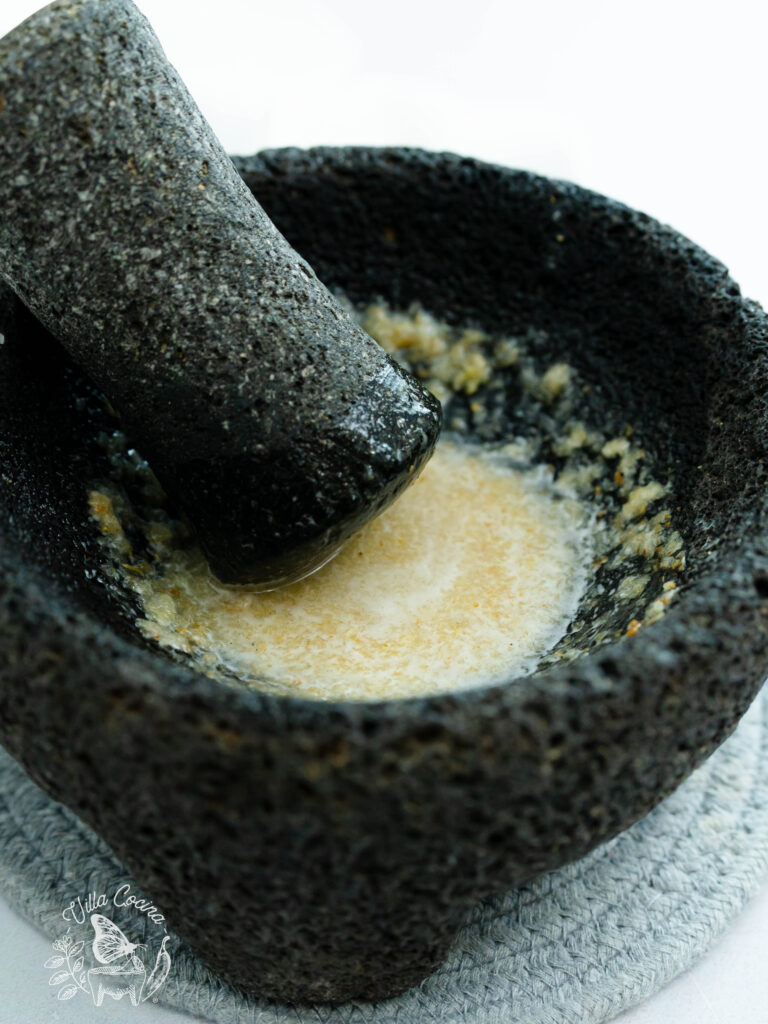
Transfer the rehydrated peppers to a blender along with the broth and the sautéed onions (the ones cooked before browning the meat). If you don’t have a molcajete, add the garlic, cumin, and 1/2 tsp of kosher salt directly to the blender.
Blend until smooth, then strain to remove any large pieces of chili skin if necessary.
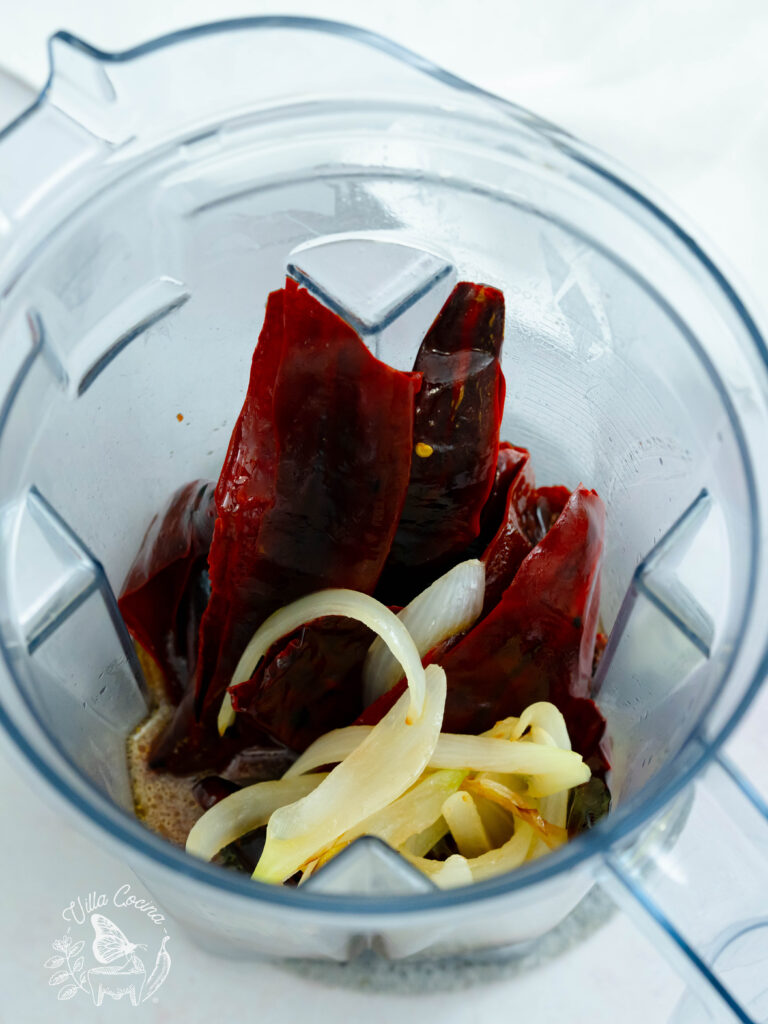
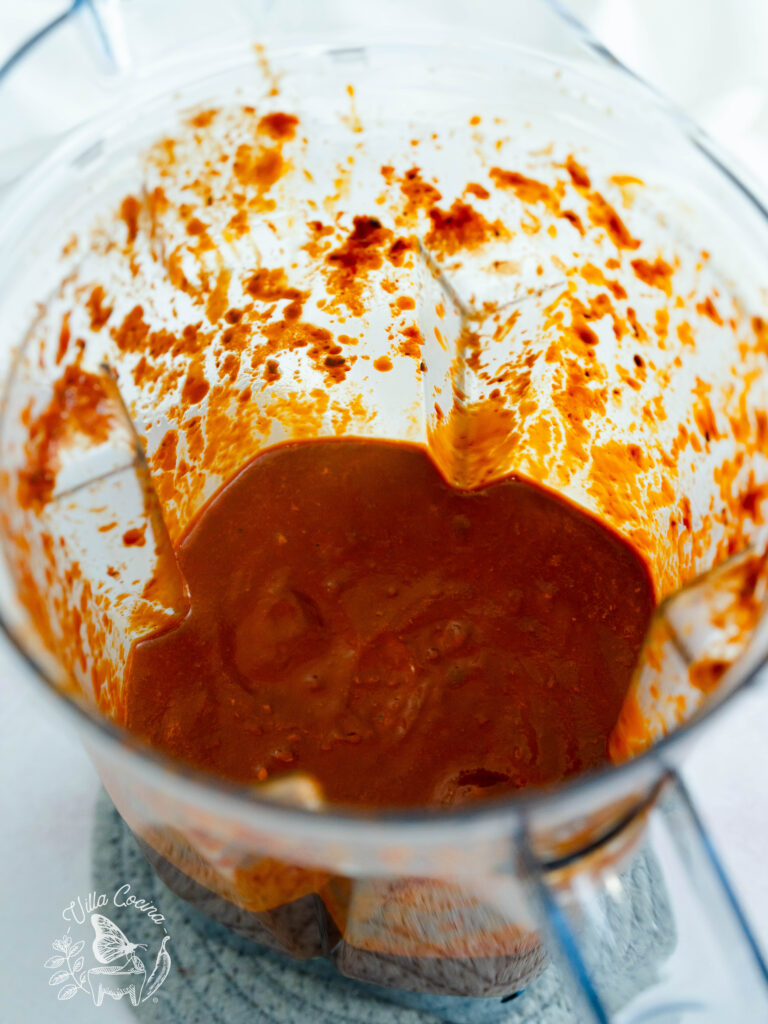
Heat 1 tablespoon of oil in a large pot over medium-low heat. Carefully pour in the sauce and stir. Pour the remaining 1 cup of broth into the blender, swirl to capture any leftover sauce, and transfer it to the pot.
If you used the molcajete, add the paste now and stir it into the sauce. Let it simmer gently for 5-10 minutes.
Add the shredded meat and allow it to heat through. Then, mix in the salt to taste (about 3/4 tsp kosher). Remove from the heat and let it cool.
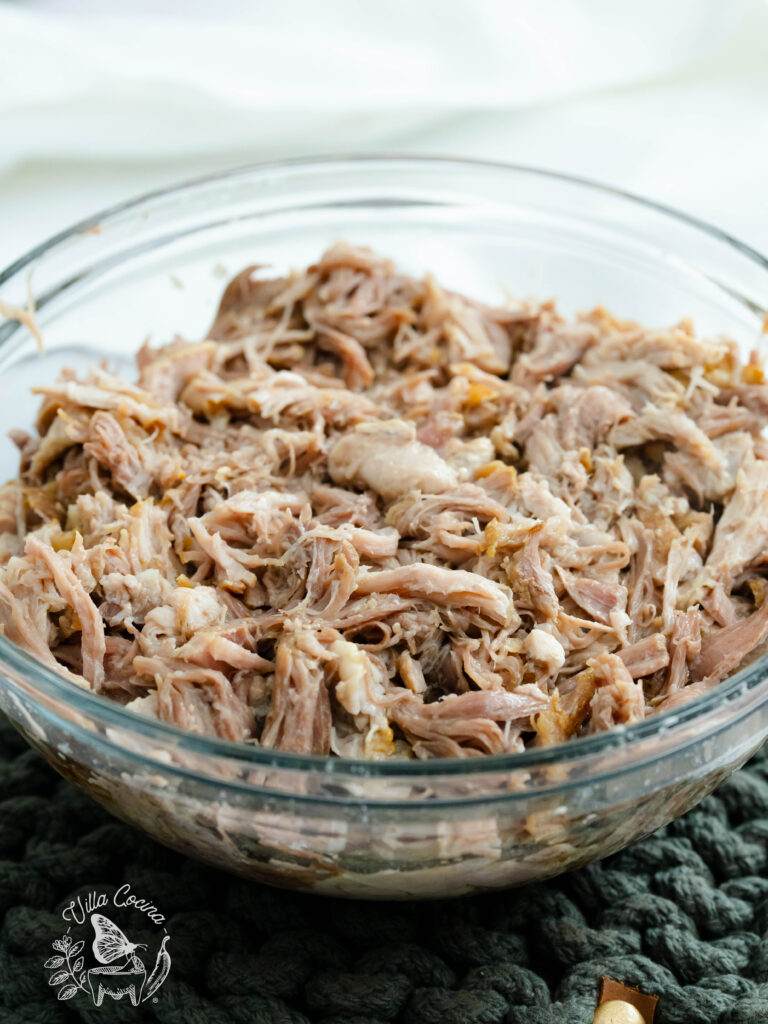
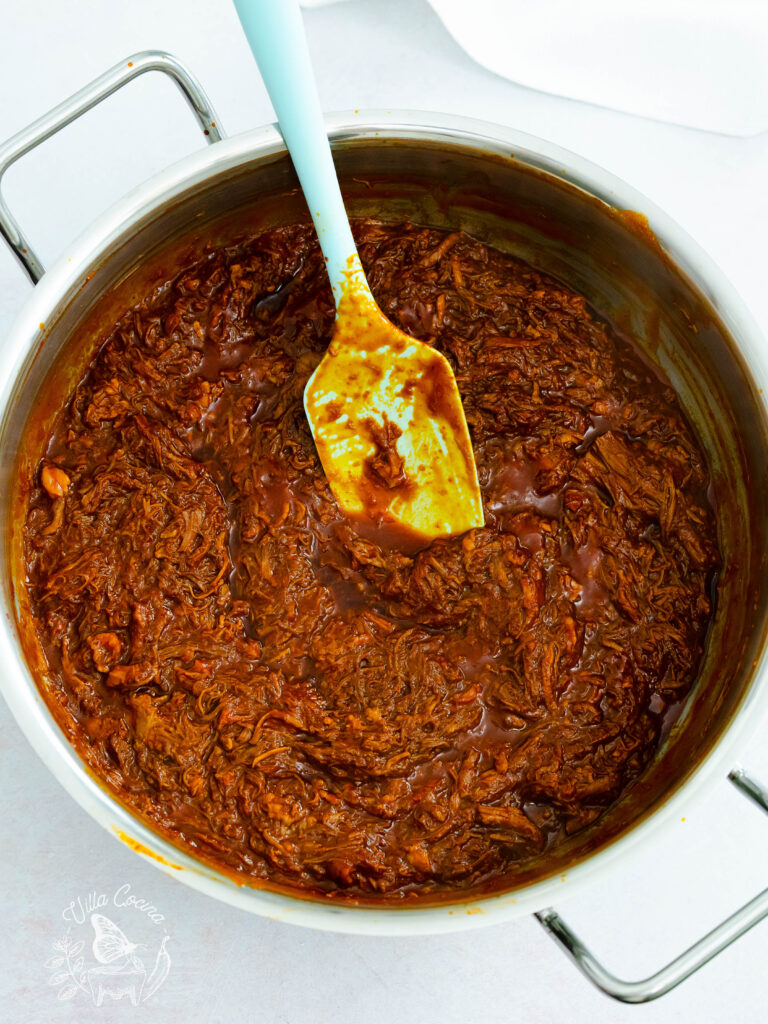
Corn Husk
Sort through the husks, selecting medium to large ones without holes or dark spots. Any imperfect ones can be used later, when cooking.
Submerge the husks in warm to hot water for 15–30 minutes, or until softened. Rinse, remove any corn silk, drain, and transfer to a container.
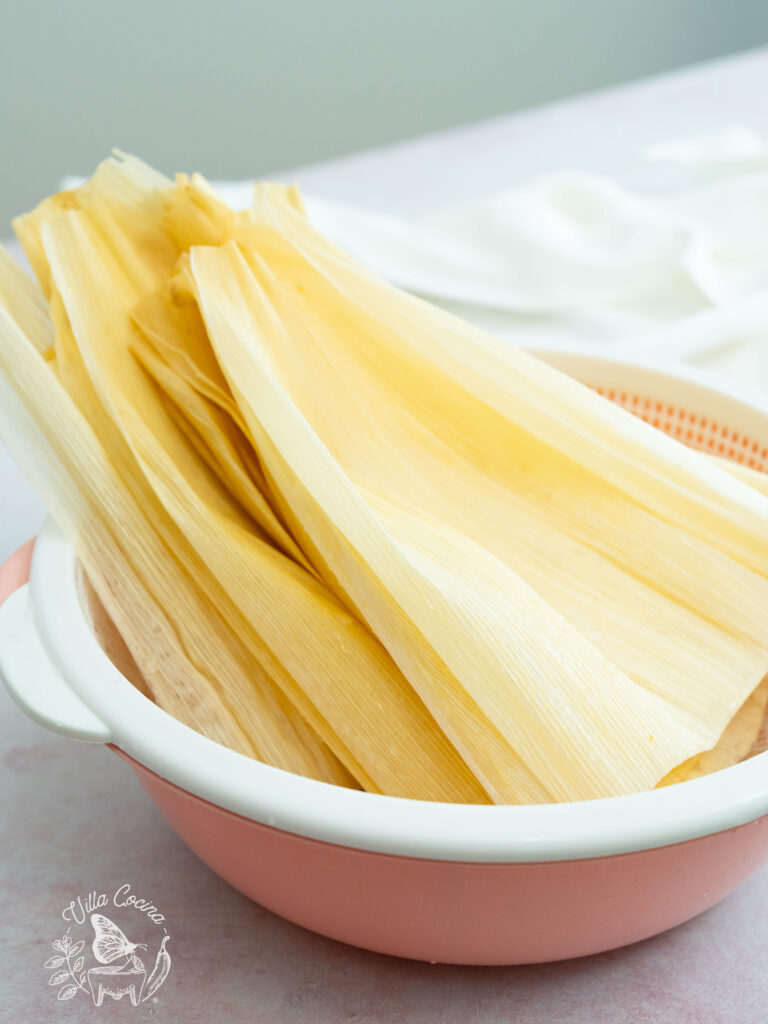
Masa – Dough
In a large bowl, whisk together the lard and shortening until smooth, light, and fluffy, about 2–3 minutes.
In a separate bowl, mix together the corn masa harina, baking powder, and kosher salt until evenly distributed.
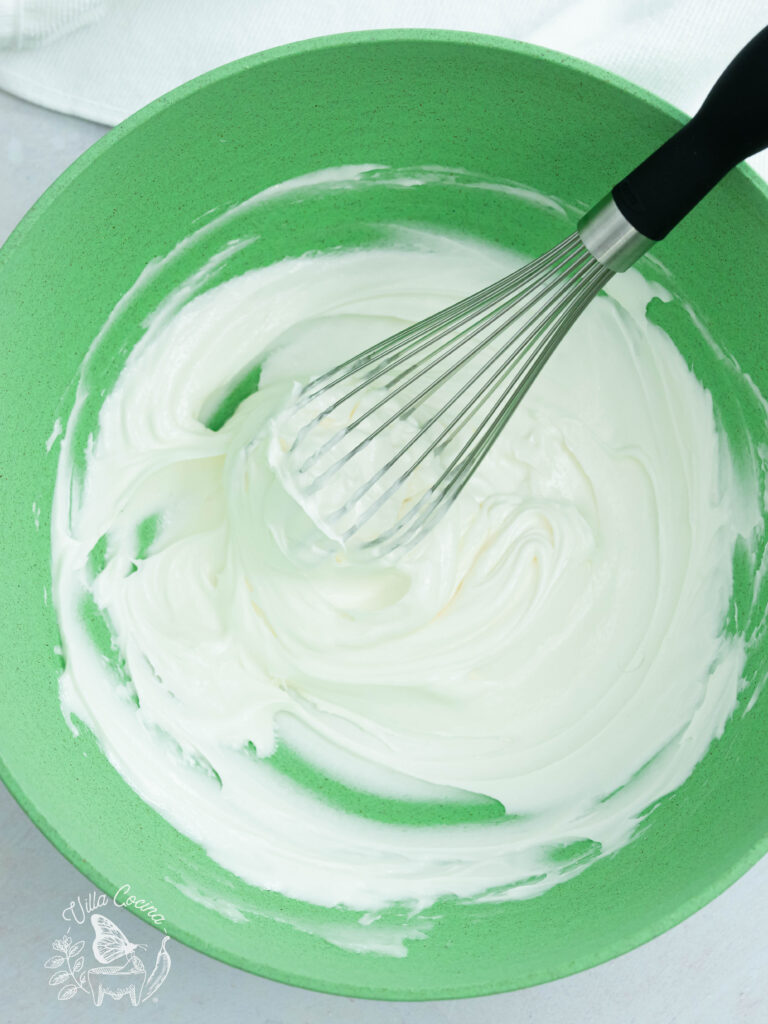
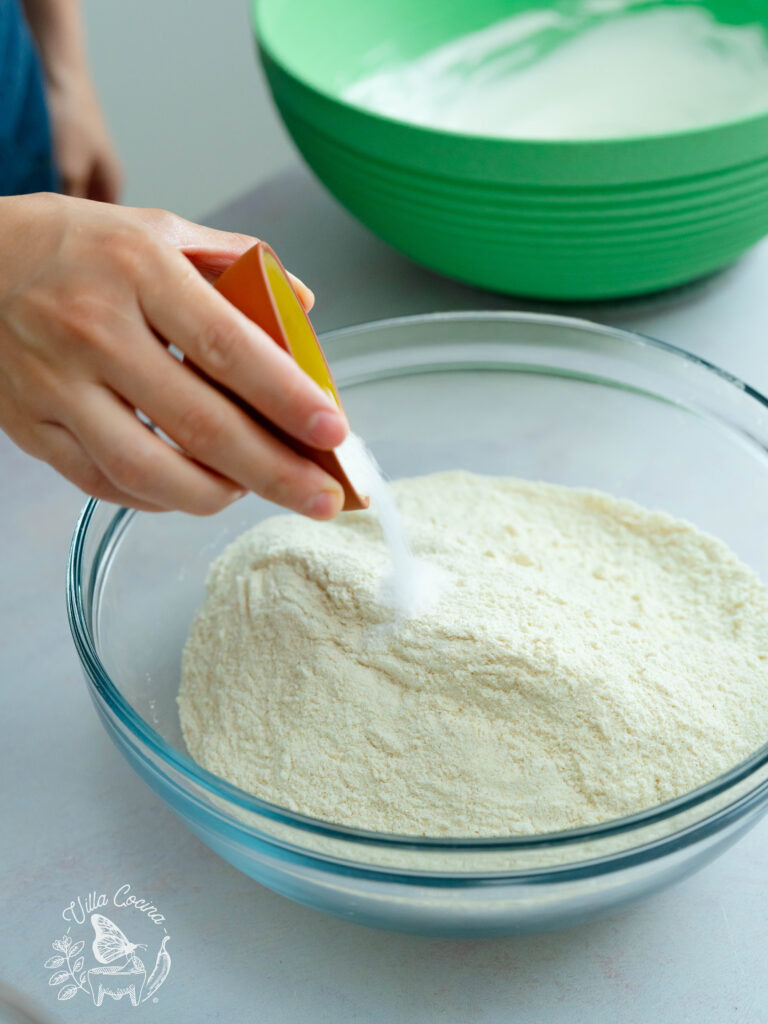
Add the masa mixture in two parts, kneading between each addition until the lard is fully incorporated and it reaches a crumbly consistency.
Gradually add the broth, kneading the dough after each addition, until it reaches a soft, fully moistened texture that holds its shape. The amount of broth required may vary depending on its temperature.
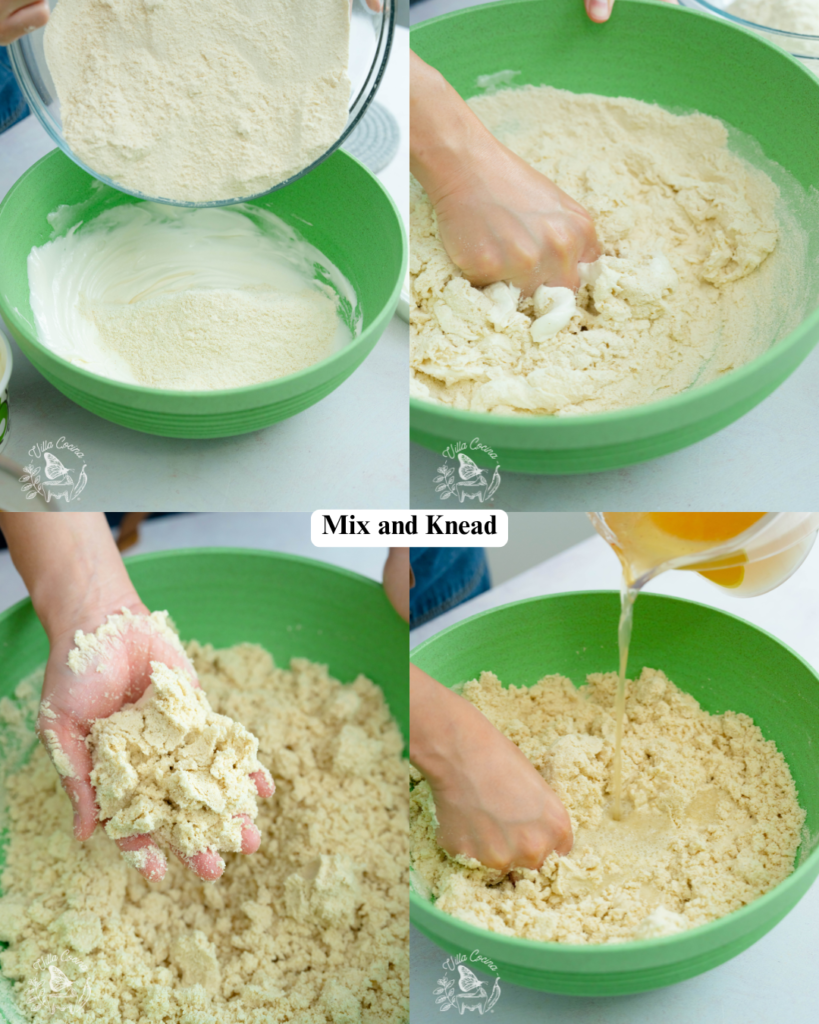
Moisture is essential for soft tamales, but keep in mind that the dough should be soft, not stick to your clean hands, and hold its shape when molded.
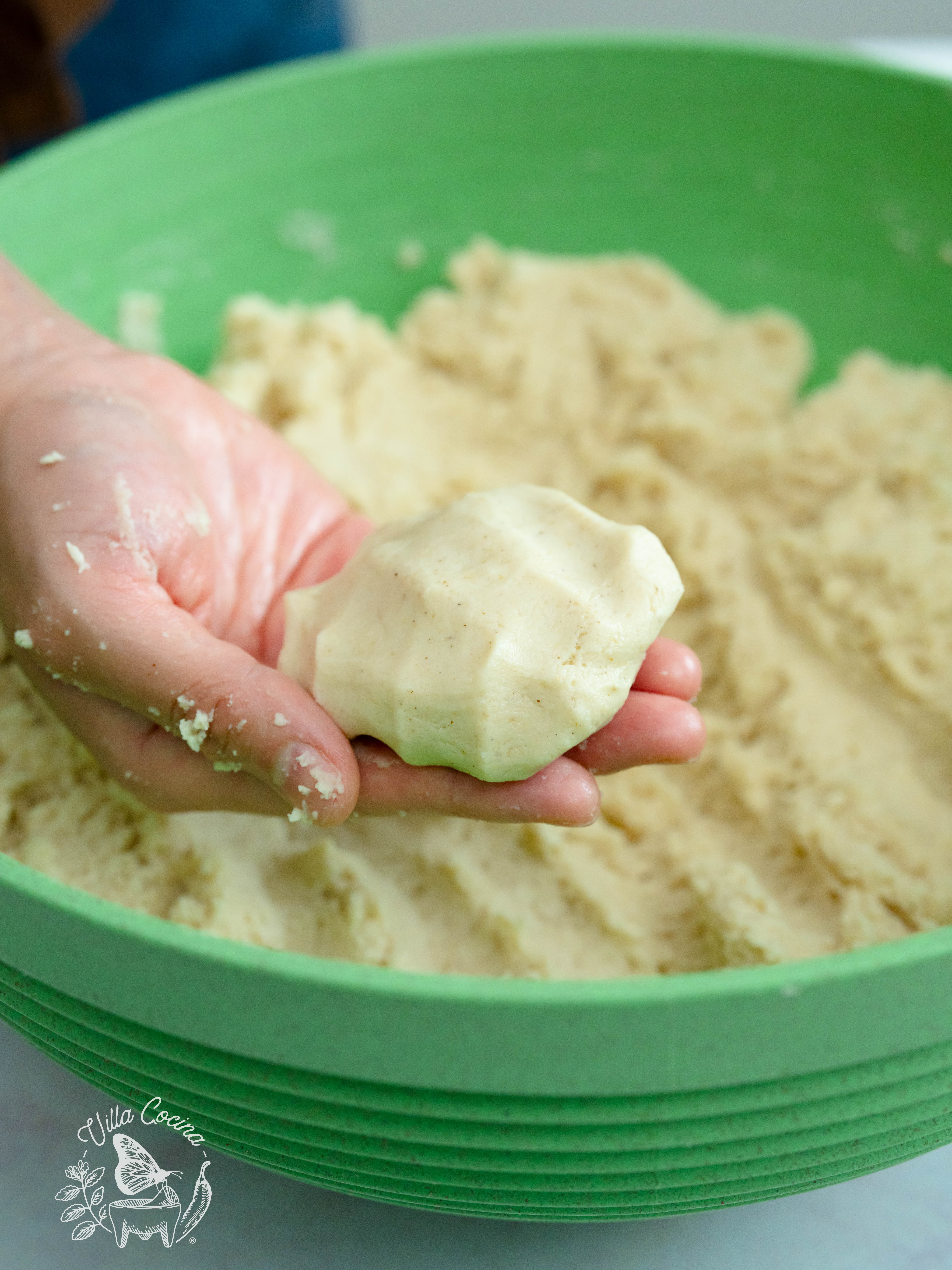
Cover the dough with a kitchen towel to prevent it from drying out. If it does, add more broth to achieve the right consistency.
Assemble the Tamales
Click the HOW TO WRAP TAMALES link for detailed, step-by-step instructions.
Cook the Tamales
Use a large steamer pot and add enough water to reach just below the rack, ensuring it doesn’t touch the tamales while cooking.
Arrange three tamales in a “T” shape, with the open ends facing inward to create a stable base.
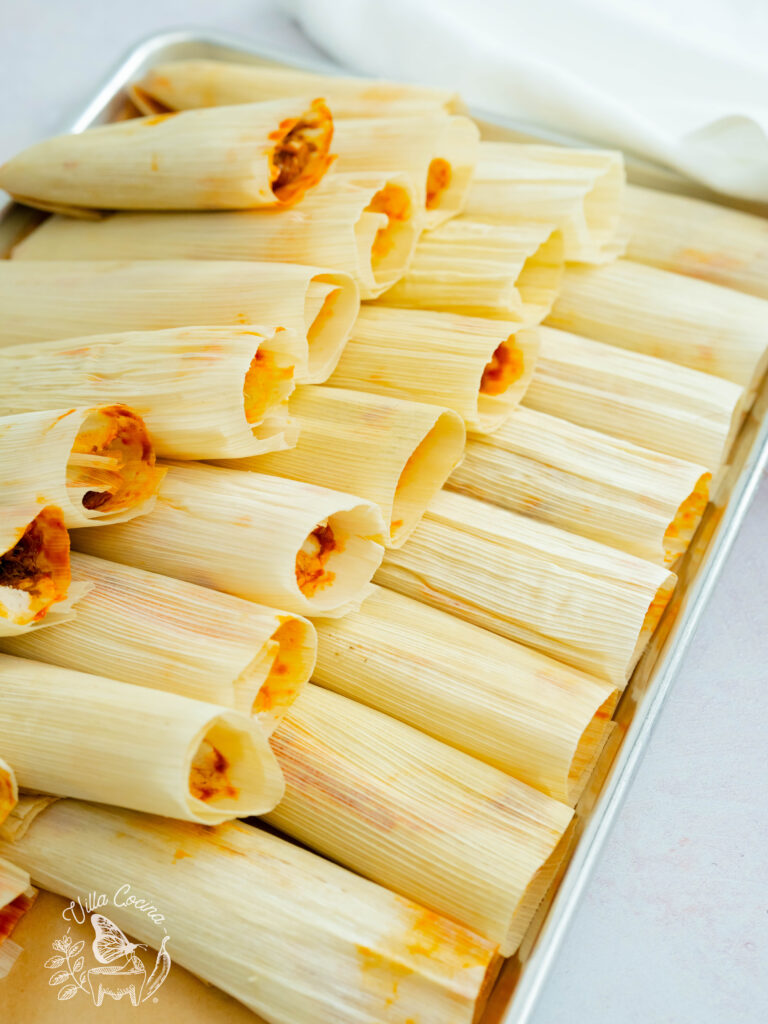
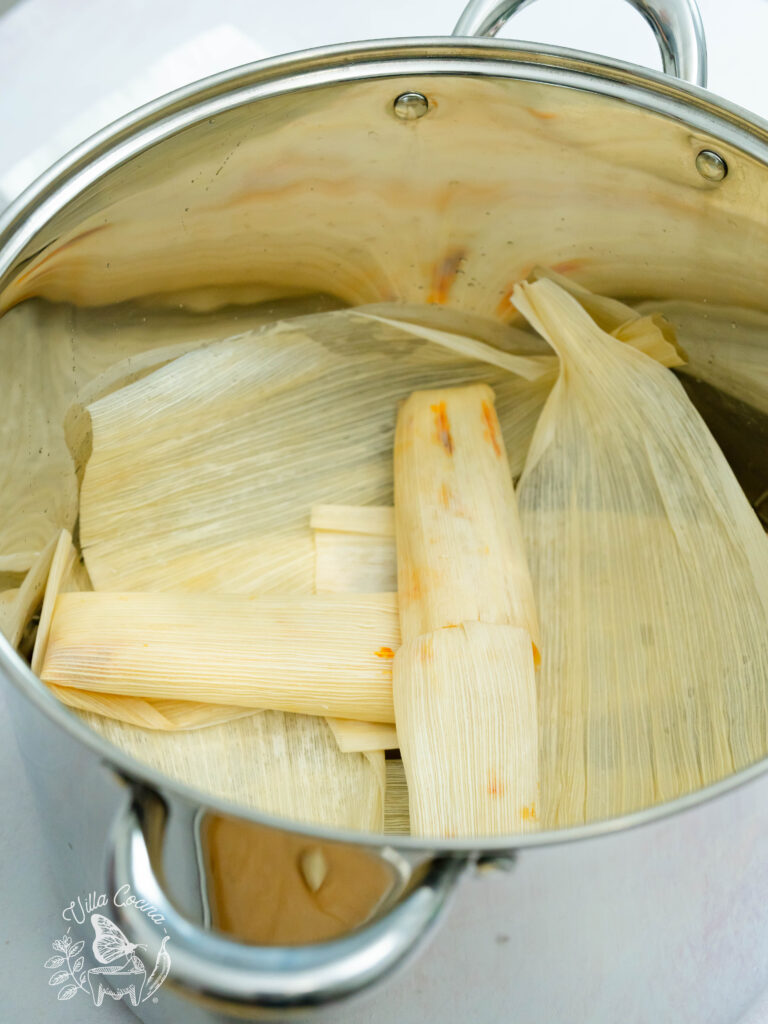
Arrange the remaining tamales around the base, open ends up. Cover with the imperfect husks to prevent water from getting in.
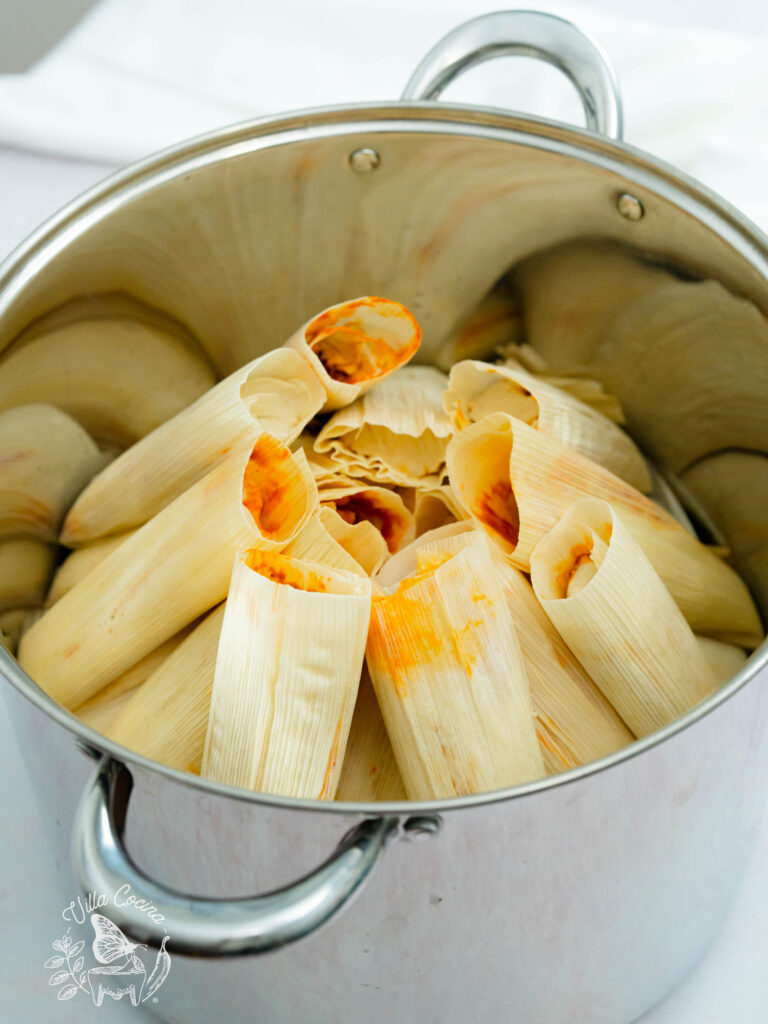
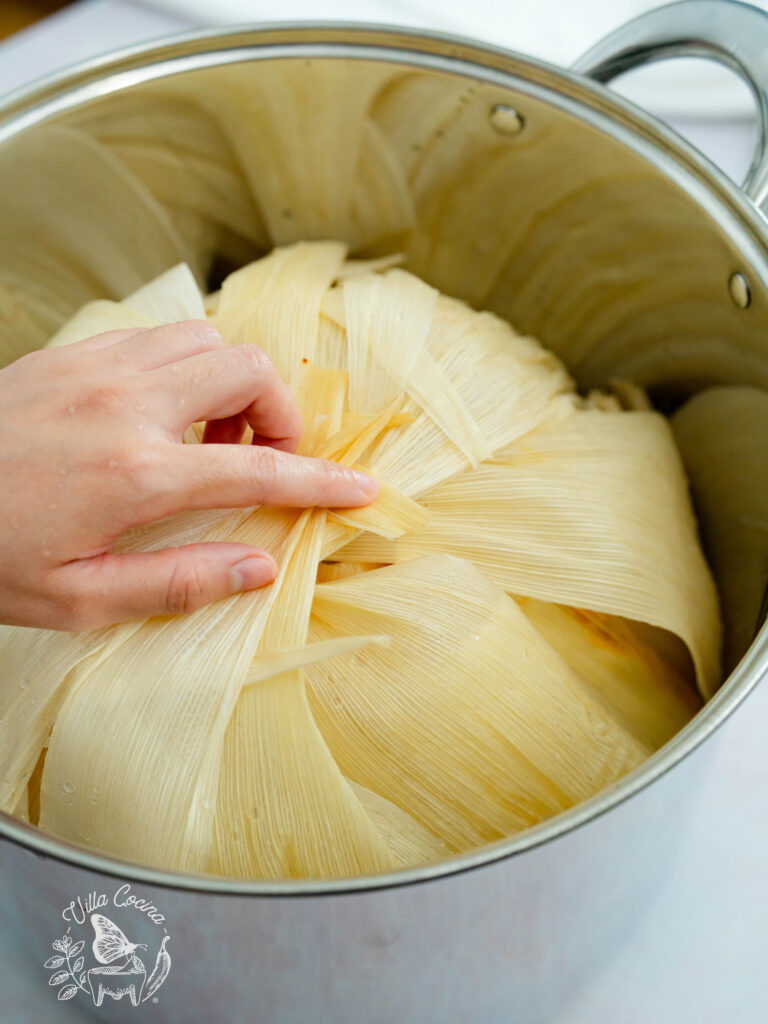
Let the water come to a boil over medium-high heat. Then, cover the pot, lower the heat to medium-low, and simmer gently for 50 minutes to 1 hour 10 minutes, or until the dough is fully cooked.
Add more water to the bottom of the pot if it’s running low.
Remove a tamal from the pot and let it cool for 5-10 minutes before unwrapping. If it releases easily from the husk, holds its shape, and doesn’t taste like raw masa, it’s ready. Turn off the heat, and keep the pot covered if not in use.
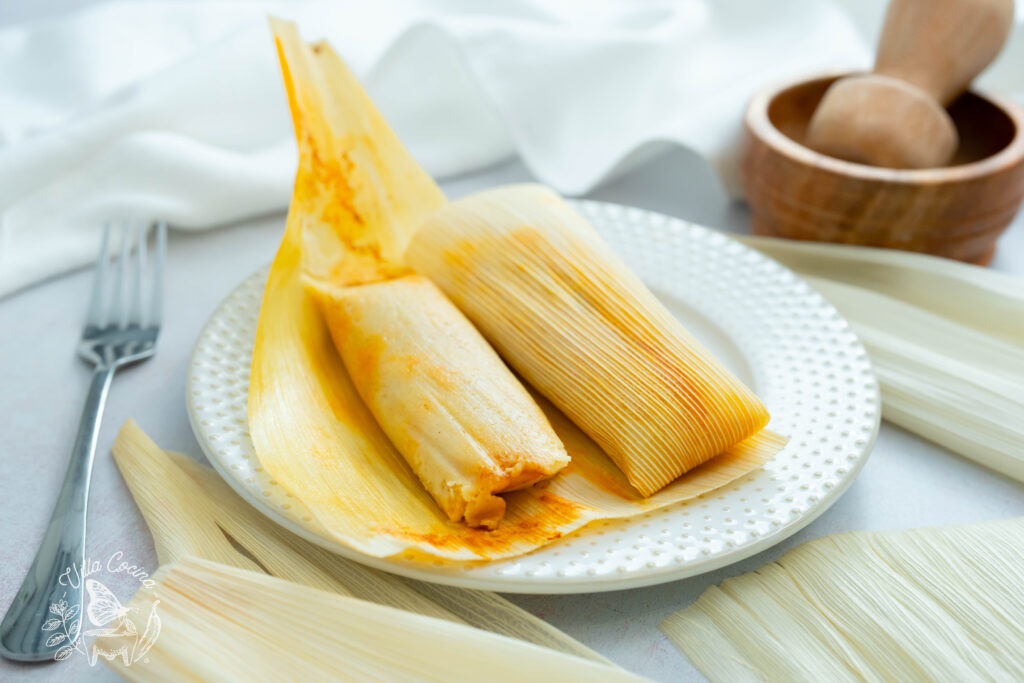
Recipe Video Tutorial
Below is my easy to follow video tutorial on how to make these Red Pork Tamales.
Enjoyed the video? Subscribe and tap the bell for updates on new recipes. Thank you for your support!
Make Ahead Options
These tamales should be wrapped and cooked the same day for the best results. However, you can definitely speed up the process by prepping ahead of time.
- The filling can be made the day before and kept refrigerated. However, if the filling is cold when added to the tamales, it may take a bit longer for the masa to cook through. Simply allow for extra steaming time to ensure everything is fully cooked.
- Mise en place, or preparing and organizing ingredients and tools before cooking, is key to a smooth process. For tamales, it includes getting things prepped and measured ahead of time, such as:
- Instant corn masa harina – measure
- Baking powder – measure
- Lard – measure
- Shortening – measure
- Deseeding and stemming the peppers – prep
- Sorting through the corn husks – prep
Make sure to refrigerate anything that needs to be kept cool.
Also, reviewing the ingredient list beforehand helps ensure you’re not making extra trips to the store on the day of cooking. See the recipe card below for the full list of ingredients.
Store
- Refrigeration: Leftover tamales can be stored in airtight containers or Ziploc bags in the refrigerator for 3-4 days.
- Freezing:
Allow the tamales to cool completely before placing them in freezer-safe bags. Keep the husks on and remove as much air as possible.
Label the bags with the name and date to keep track. Tamales can be stored in the freezer for up to 3 months.
- To reheat, thaw the tamales in the refrigerator overnight. Once thawed, steam or microwave them to heat through.
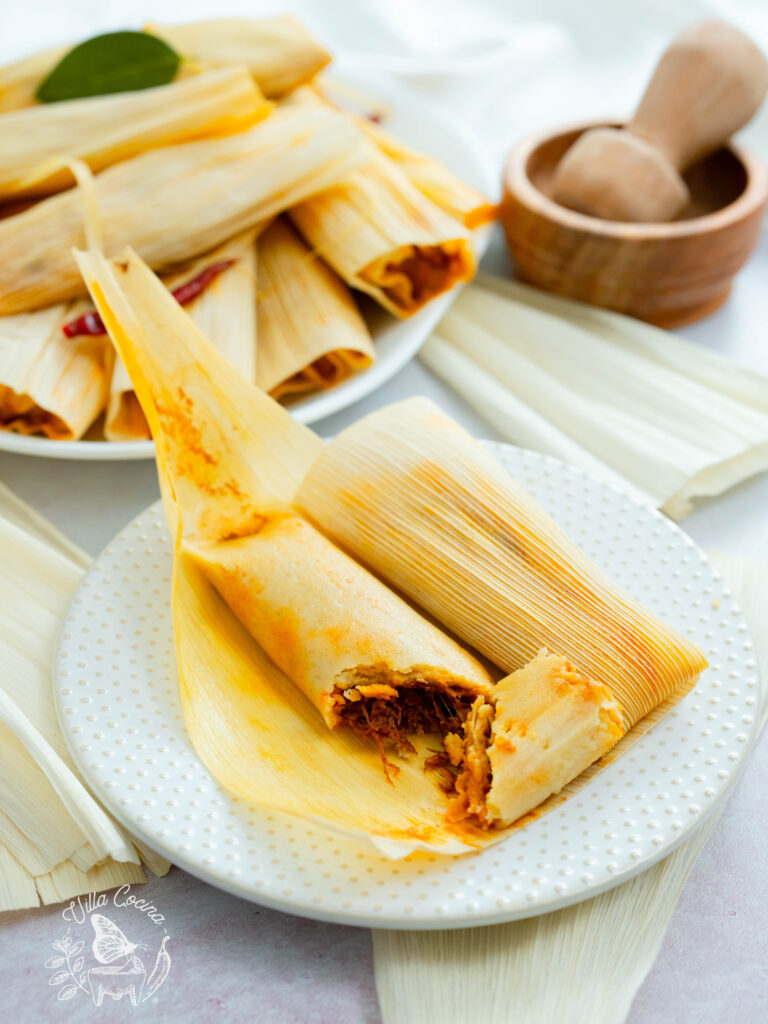
Exploring More Tamal Varieties
Tamal Pairings
In my family, tamales have always been served simply, with a warm cup of atole or champurrado—sweet, comforting Mexican drinks. Growing up in Michoacán, this was the tradition I knew and loved.
That said, I recognize how beautifully diverse Mexican cuisine is, and it’s fascinating to imagine how tamales might be served in other regions or by different families. Some possibilities might include:
- Pickled Red Onions
- Mexican Salsa
- Mexican Crema
- Pozole Rojo
- Guacamole
- Pico de Gallo
- Queso Fresco
- Mexican Chopped Salad
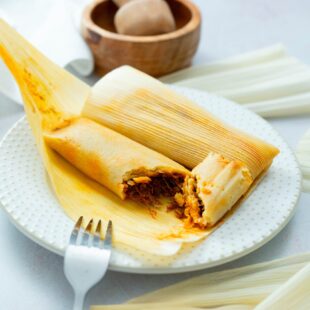
Mexican Red Pork Tamales
Ingredients
Cook the Pork
- 2 lbs boneless pork shoulder (Boston butt), cut into large squares
- 1/4 white onion, cut into thin wedges
- 10 cups water
Aromatics
- 1/2 white onion
- 4 garlic cloves, peeled
- 2 bay leaves
- 1/2 tsp dried Mexican oregano
- 1/2 tsp whole black peppercorns
- 2 tsp kosher salt
Chile Sauce
- 8 large guajillos, deseeded and stemmed
- 2 ancho chiles, deseeded and stemmed
- 4 chiles de árbol, stemmed
- 2 garlic cloves, peeled
- 1/2 tsp cumin seeds
- 3 cups pork broth
- To taste kosher salt
Masa
- 1 cup pork lard, well-packed
- 1/2 cup shortening, well-packed
- 6 cups instant corn masa harina
- 1 tsp baking powder
- 1 1/2 tsp kosher salt
- 3-4 cups warm pork broth
Additional
- 36 corn husks
- Oil, as needed
Instructions
Cooking the Pork
- Heat oil in a large pot over medium heat. Sauté onion wedges until softened, then remove and reserve. Adjust the heat to medium-high.
- Brown the pork in batches, turning each piece to ensure even coloring on all sides and to avoid overcrowding the pot.
- Add water and return the browned pork to the pot. Stir in the aromatics and salt. Bring to a boil, then reduce to a gentle simmer over medium-low heat. Cover and cook for 2–2.5 hours, or until the meat is fork-tender. Shred the meat and strain the broth, reserving both for later use.
Chile Sauce
- Toast the guajillo, ancho, and arbol chilis on a comal over very low heat until fragrant, turning constantly to prevent them from burning.
- Rinse the peppers and transfer them to a heatproof container. Pour 2 cups of the reserved hot broth over the chiles to rehydrate, and let them sit for about 5 minutes, or until softened.
- Molcajete (If you don’t have a Mexican mortar and pestle, skip this step) : Grind and mash the garlic, cumin, and 1/2 tsp of kosher salt into a paste, then loosen it with 2 tablespoons of water. Transfer to a small container and set aside until needed.
- Transfer the rehydrated peppers to a blender along with the broth and the sautéed onions (the ones cooked before browning the meat). If you don’t have a molcajete, add the garlic, cumin, and 1/2 tsp of kosher salt directly to the blender.
- Blend until smooth, then strain to remove any large pieces of chili skin if necessary.
- Heat 1 tablespoon of oil in a large pot over medium-low heat. Carefully pour in the sauce and stir. Pour the remaining 1 cup of broth into the blender, swirl to capture any leftover sauce, and transfer it to the pot.
- If you used the molcajete, add the paste now and stir it into the sauce. Let it sauce simmer gently for 5-10 minutes.
- Add the shredded meat and allow it to heat through. Then, mix in the salt to taste (about 3/4 tsp kosher). Remove from the heat and let it cool.
Corn Husks
- Sort through the husks, selecting medium to large ones without holes or dark spot. Any imperfect ones can be used later, when cooking.
- Submerge the husks in warm to hot water for 15–30 minutes, or until softened. Rinse, remove any husk hairs, drain, and transfer to a container.
Masa-Dough
- In a large bowl, whisk together the lard and shortening until smooth, light, and fluffy, about 2–3 minutes.
- In a separate bowl, mix together the corn masa harina, baking powder, and kosher salt until evenly distributed.
- Add the masa mixture in two parts, kneading between each addition until the lard is fully incorporated and it reaches a crumbly consistency.
- Gradually add the broth, kneading the dough after each addition, until it reaches a soft, fully moistened texture that holds its shape. The amount of broth required may vary depending on its temperature.
- Moisture is essential for soft tamales, but keep in mind that the dough should be soft, not stick to your clean hands, and hold its shape when molded.
- Cover the dough with a kitchen towel to prevent it from drying out. If it does, add more broth to achieve the right consistency.
Assemble the Tamales
- Click the HOW TO WRAP TAMALES link for detailed, step-by-step instructions.
Cook the Tamales
- Use a large steamer pot and add enough water to reach just below the rack, ensuring it doesn’t touch the tamales while cooking.
- Arrange three tamales in a "T" shape, with the open ends facing inward to create a stable base.
- Arrange the remaining tamales around the base, open ends up. Cover with the imperfect husks to prevent water from getting in.
- Let the water come to a boil over medium-high heat. Then, cover the pot, lower the heat to medium-low, and simmer gently for 50 minutes to 1 hour 10 minutes, or until the dough is fully cooked.
- Add more water to the bottom of the pot if it’s running low.
- Remove a tamal from the pot and let it cool for 5-10 minutes before unwrapping. If it releases easily from the husk, holds its shape, and doesn’t taste like raw masa, it’s ready. Turn off the heat, and keep the pot covered if not in use.
Nutrition
Did you make this recipe?
Show some love! Tag @villacocinaofficial on Instagram and drop a 5-star review. Your support means everything—thanks!
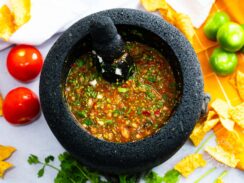
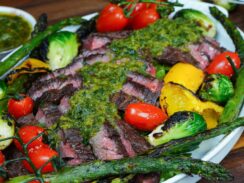
Sue
These are the best tamales EVER!
Well worth the effort for an amazing outcome! The recipe is easy to follow and the video is very helpful as well. I’ve made them 3 times already just since last fall.
Villa Cocina
That is awesome! So happy you’re enjoying them! tamales are a great recipe all year round!☺️
Rusty Connors
Hi Villa,
I moved to Oxnard California back in 1980 from Buffalo NY. I was introduced to tamales that were great. I moved back to buffalo in 1995 , my wife and I want what we had in California. We are going to follow your recipe thanks. Is there organic Masa ? Rusty Connors
Villa Cocina
That’s awesome! Yes, I love using King Arthur’s masa harina. You can find the link at the bottom of the recipe card under “Equipment.” Masienda also offers an excellent masa product worth trying.
Lisa
My sauce turned out quite hot! Any suggestions to cool it down a bit?
Villa Cocina
Did you remove the seeds from the peppers? You could also omit the chiles de árbol for a milder result. The guajillos and anchos are generally mild, but the heat level can vary depending on the batch. Sorry to hear it was too spicy for you.
Angela
This recipe was fantastic! 30 tamales GONE in two days
Villa Cocina
Love it!
Josie
Your recipe looks fantastic and can’t wait to make them. But I’m confused on the masa measurements for the baking powder. In all your tamale recipes for the masa it calls for 1 tablespoon of baking powder except for this one the pork tamales, it calls for 1 teaspoon ?
Villa Cocina
Thanks for your question! All are great recipes. I didn’t change the pork tamale recipe because it’s my mother’s, and the 1 teaspoon of baking powder works perfectly. As a food blogger, I’m always refining my recipes, which is why you might see some variations. This classic recipe has stayed intact because it works, but feel free to add more baking powder for a lighter texture. Hope this clears things up!
Paulette
I have made these several times. Your recipes should be elevated above most that come up in a Google or YouTube search. I love your devotion to tradition and your clear respect for the effort all that good things require.
Villa Cocina
So kind of you! We’re passionate about sharing tradition and great recipes.
Denise
The tamales came out delicious 😋 A very easy recipe to follow and the video was helpful too.
Villa Cocina
Yay! Good for you — and thanks so much for coming back to share!